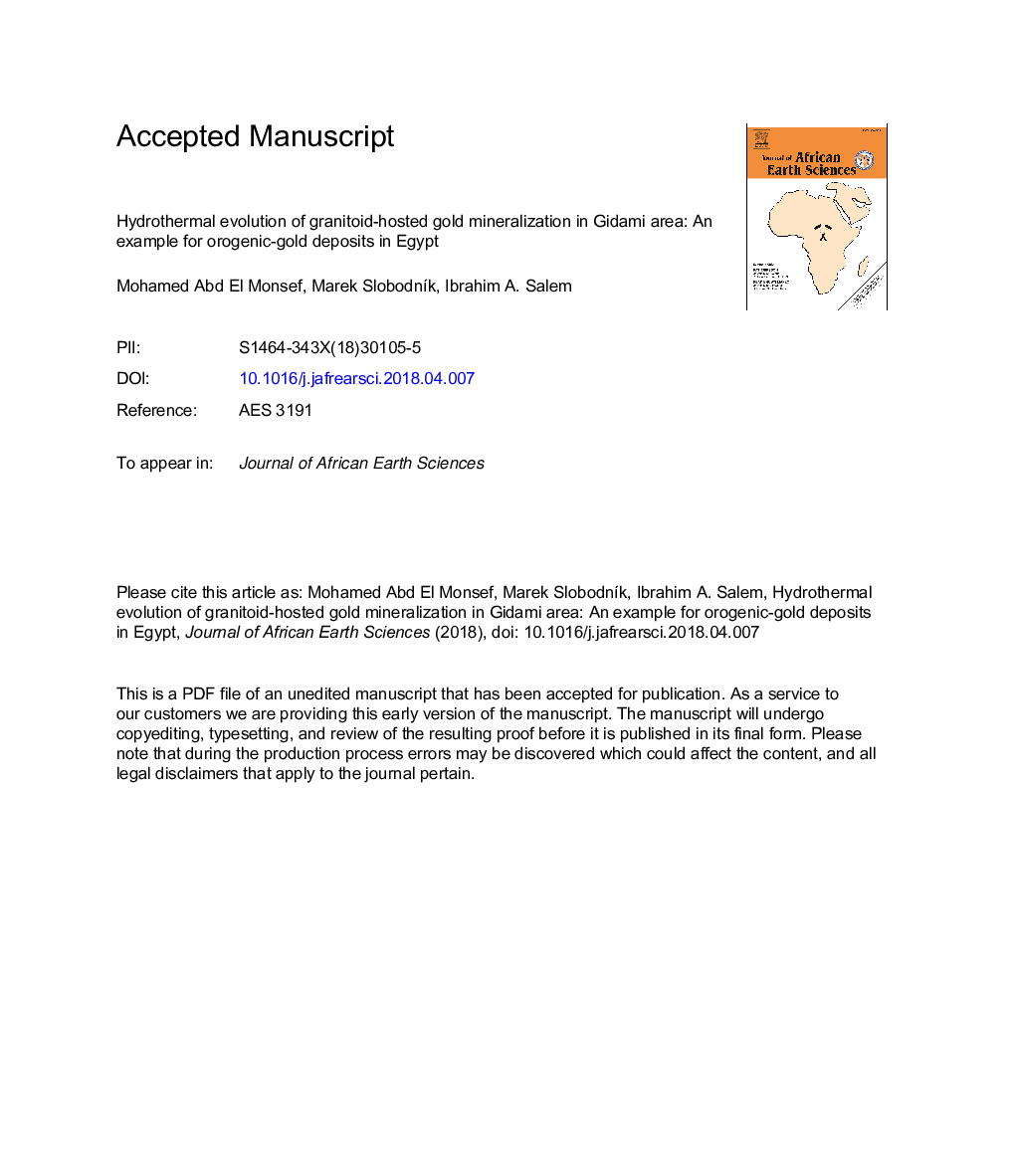| Article ID | Journal | Published Year | Pages | File Type |
|---|---|---|---|---|
| 10224377 | Journal of African Earth Sciences | 2018 | 51 Pages |
Abstract
Three types of fluid inclusions are recognized at the core and rim of the auriferous quartz vein as follows: 1) Two phases aqueous (H2O-NaClâ¯Â±â¯KCl), 2) Two phases aqueous (H2ONaClâ¯Â±â¯MgCl2), and 3) Three phases aqueous-carbonic (H2O-NaCl-CO2±CH4) fluid inclusions. Isochores intersection from fluid inclusions data outlines that, the Gidami gold deposits are of the mesothermal type formed at temperatures range between (270-300â¯Â°C), and pressure (750-850â¯bar) corresponds to a depth around 3â¯km (assuming pure lithostatic pressure). The ore-bearing fluids are supposed to be sourced mainly by fluids of metamorphic and meteoric origin. However, criteria of partial mixing with water of magmatic signatures has been proposed during fluid evolution. The transportation of gold was in form of bisulphide compounds in moderately reduced, neutral to weakly alkaline environment and then the precipitation occurred as a result of changing in Eh and pH conditions.
Keywords
Related Topics
Physical Sciences and Engineering
Earth and Planetary Sciences
Geology
Authors
Mohamed Abd El Monsef, Marek SlobodnÃk, Ibrahim A. Salem,
